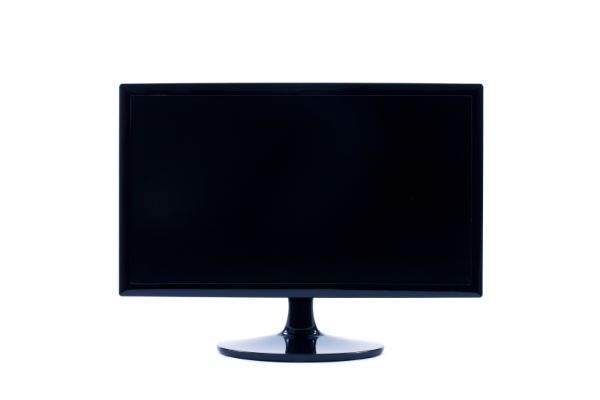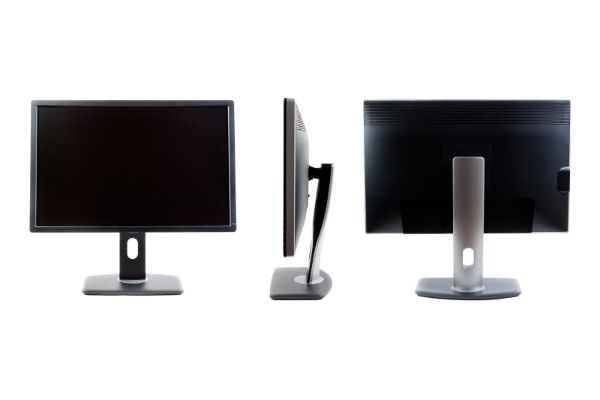Disclaimer: This post may contain affiliate links, meaning we get a small commission if you make a purchase through our links, at no cost to you. For more information, please visit our Disclaimer Page.
A UWVA display is a display panel that provides an immersive experience when you use devices that have it. You may also consider it a marketing term used by some companies(like HP) to describe their screen matrix or panel type.
Table of Contents
Is UWVA an IPS?
Most people buy devices solely based on the cost, often ignoring other specs. Of course, price is essential when you buy a TV or monitor, but you should also know about some of its technology.
Ultra Wide Viewing Angle is an In-Plane Switching (IPS) panel, and IPS are one of the many Liquid Crystal Display (LCD) panels available. HP uses UWVA to describe its IPS display panels.
To better understand IPS panels and how UWVA fits into the picture, consider these details:
Description
IPS display panels are some of the best LCD panels that balance speed and performance. LG created the term IPS, and other brands, like Samsung, refer to comparable technology differently. For example, AU Optronics uses Advanced Hyper Viewing Angle (AHVA), while Samsung uses Plane-to-Line Switching (PLS).
The IPS screen technology has a layer of liquid crystals aligned parallel and sandwiched between two glass surfaces. It’s a transmissive display that uses a backlight and color filter, passing the lights through a polarizer and thin-film transistor matrix.
IPS LCD came into being to solve the low-quality color and strong viewing angle dependence of the Twisted Nematic field effect. It produces colors as natural as we see with our eyes, and IPS screens are also pretty heavy and durable.
IPS terminology and types
There are various IPS displays: some only reach 45% of the color gamut, while others reproduce 72% NTSC and 100% sRGB. Different iterations also exist with improved versions released over the years – S-IPS, e-IPS, Nano IPS, AH-IPS, etc.
HP uses UWVA to describe its IPS panels, whereas Lenovo and Dell use WVA to express theirs. IPS is a name registered and trademarked by LG, but they aren’t the only producers of the technology.
If another vendor uses the same technology produced by a different company, they’ll have to label it something else. So, if you see an “IPS-level” label on a monitor, LG did not make the IPS panel.
Applications
The applications of IPS display panels cut across fields and industries. Graphic designers, cinephiles, gamers, and artists are groups of people who enjoy the benefits and specs of IPS panels.
IPS LCD technology is also used for smartphones, tablets, laptops, and TVs. It has an impressive image quality and is the best choice for users who prioritize color consistency and accuracy.
So What Is a UWVA Display?
When choosing a TV, laptop, or monitor, the display or screen is often a crucial factor you consider. After all, the screen is any computer’s centerpiece and the primary interface you use to interact with the system’s functions.
Manufacturers of these technological devices offer various display options, and sorting through the cocktail of letters and acronyms might be a hassle. Screen matrixes or display panels include IPS, Vertical Alignment (VA), and Twisted Nematic (TN).
These panels come in different forms, like UWVA, Advanced High-Performance IPS (AH-IPS), Plane to Line Switching (PLS). Knowing about these panels and their respective features will help you select a display monitor that’s ideal for your needs. Gamers and graphic designers have different preferences, as do writers and office workers.
An Ultra Wide Viewing Angle (UWVA) is a form of IPS. As the name goes, the wider the angle, the better the view. So it’s especially great for gaming or watching movies, allowing you to see the screen better at certain angles.
This means if you peek at the TV by leaning through the kitchen doorway, the characters on the screen won’t be a mesh of blobs. UWVA is also a standard for touch displays, and you’ll find it in phones and notebooks.
Although cores, screen sizes, and gigs are important considerations when selecting devices, focusing on other screen features is also beneficial.
Are UWVA and IPS Displays Similar?
You could say UWVA and IPS displays are similar, but a more accurate description would be that UWVA is a form of IPS. Acronyms like UWVA, Wide Viewing Angle (WVA), and Standard Viewing Angle (SVA) came into the industry some decades ago.
They are convenient ways to describe a screen’s quality to the consumer, instead of having them wonder what an IPS is. When you see SVA on a screen’s description, it most likely has TN panels; UWVA has IPS panels, and WVA has VA panels.
Now that you understand how “similar” UWVA and IPS displays are, here are more details about IPS displays:
How IPS displays work
These display panels are probably the most common type in use today, and it wouldn’t hurt to understand how they work. An IPS display has an arrangement of LCD pixels that shift color as necessary. It uses an LED backlight since it cannot emit its own.
It’s like reading a book with a torchlight: you can’t see the book’s pages without the external light from the torch. Consequently, the IPS display remains on even if you open a black image.
They usually arrange the LED backlight in the following layouts:
- Spread across the entire display
- Towards the edges
- Separated into different sections
IPS LCD screens cannot display an actual deep black color. Some light still passes through when the LCD pixel alignment changes so pixels can block light transmission. The light that passes through produces a dark grey color instead of black and causes some backlight leakage.
Local Dimming is a feature of IPS displays that reduces the backlight bleed. By compartmentalizing the backlight into different matrices, this feature enables only specific sections to turn on per time. Some areas remain off and produce true blacks, while other sections that show non-black colors are turned on.
However, the active or turned-on zones still display some backlight bleed. Another thing to note is the ‘IPS Glow.’ It’s an event in which the display’s backlight flashes in a more final viewing angle when you look at it.
Advantages of IPS displays
You might go for an IPS display panel or IPS LCD screen because:
- They have fantastic color accuracy, displaying the same color quality from all viewing angles.
- These display panels provide the best viewing angles of current LCD technology – up to 178 degrees.
- IPS displays don’t suffer from image burn-in like other display panels.
- IPS panels provide a relatively stable response time, especially if you’re not using them for gaming.
- These panels don’t show tailing or lighten when you touch them, which is vital for touch screen devices like tablets and smartphones.
- IPS displays are relatively easy and cheap to manufacture.
Disadvantages of IPS displays
These are the reasons an IPS display may not be best for you compared to other display panels (mostly TN panels):
- They have a longer response time than TN panels, a drawback for gamers.
- IPS panels use up to 15% more power than TN panels because their backlights stay on constantly.
- They are sometimes prone to backlight bleeding or leakage.
- IPS LCD screens may have limited contrast.
- IPS panels are more costly to produce than TN panels.
What Is a UWVA Display Resolution?
A monitor or screen displays images using millions of pixels arranged in horizontal and vertical grids. This arrangement describes a screen resolution, and it is typically written using numbers representing the horizontal and vertical pixels, respectively.
For example, a 1366 x 768 resolution means the screen has 1366 pixels arranged horizontally and 768 pixels placed vertically. A UWVA display also has a resolution depicted using such numbers.
Whether a monitor or laptop screen, the most common UWVA display resolution is 1920 x 1080. Devices or screens with other UWVA display resolutions include:
- HP 747658-00110.1-inch WUXGA UWVA display assembly—1900 x 1200 resolution
- HP 806862-005 – 14-inch QHD WLED UWVA AntiGlare Display Panel—2560 x 1440 Maximum resolution
- Dell Inspiron 3464 23.8-inch All-In-One Desktop Computer (UWVA IPS Display)—2560 x 1440


